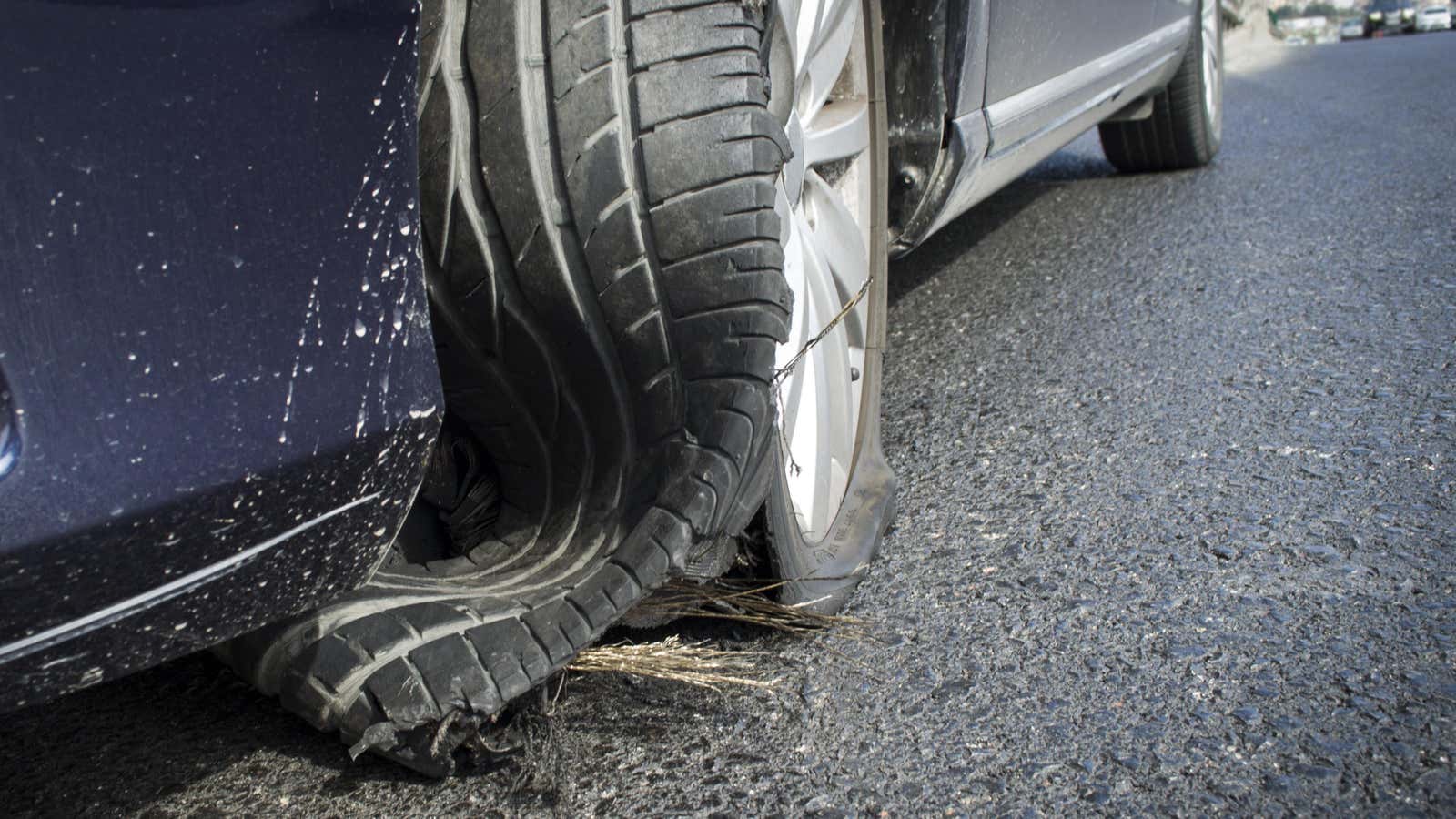What to Do If Your Tire Bursts While Driving

One of the first things people learn about driving is how important it is to pay attention to what you are doing. This means not only keeping an eye on the road (and the vehicles around you) and keeping an eye on your speed, but being aware of how a particular car typically feels when you drive it. (Is there a smooth ride? Do you feel every bump in the road? You get the picture.)
Why is it important? Because when you know how a car normally drives, it doesn’t take long for you to notice when something seems “wrong,” even if it’s subtle, like your tire is slowly escaping air. And this is especially important because finding such a problem early can prevent you from experiencing something more extreme (and definitely noticeable) like blowing a tire.
But a tire that gradually loses air is only one of the causes of a rupture; others happen much faster. Whatever the cause, here’s what to do if your tire bursts while driving.
What causes a tire to burst?
When we talk about “blowing out” a tire, we usually mean that the tire bursts suddenly and then quickly loses air. Under-inflated tires are the cause of many blowouts. This is because the lack of sufficient air pressure allows the tire to flex beyond its limits and overheat to the point where its rubber loses its bond with the inner fabric and steel cord reinforcement.
Generally speaking, a tire bursts when air escapes from it, causing it to fail to support the weight of the car. Some of the more specific causes of a burst tire include:
- Car overload
- Impact damage (depending on the strength of the impact, the ejection may occur both immediately and with a delay)
- A massive cut or cut in a tire that causes it to rapidly lose air.
- A small puncture that goes unnoticed and allows air to slowly escape from the tire.
What to do if your tire bursts while driving
A tire blowout usually starts with the sound and sensation of a tire popping, then losing air and hitting the pavement. It’s natural to be scared, but try to stay calm. Here’s what to do next:
- Take a firmer grip on the steering wheel.
- Don’t hit the brakes (even if you feel like you should at the moment).
- Accelerate slightly, driving as straight as possible.
- Gently lift your foot off the accelerator pedal to slow down.
- Turn on emergency lighting.
- Make your way carefully to the far right lane (if you are driving on a multi-lane road). Remember to keep an eye on passing vehicles.
- Pull over to the side of the road, completely clear of other vehicles and ideally on level ground.
From there, it depends a lot on where the breakout occurs and how comfortable you are with changing tires. But whether you’re calling for help or swapping out a blown tire for a spare, be sure to stay out of traffic.